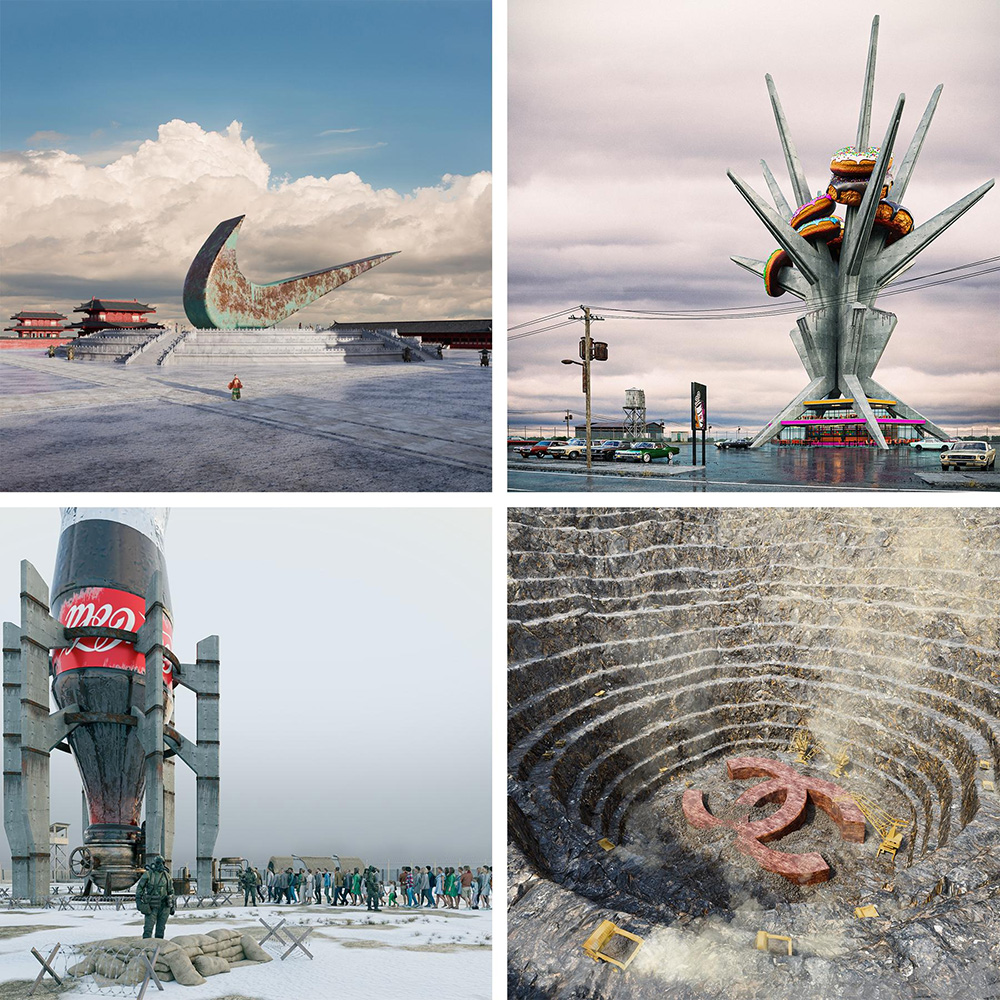The first McDonald’s store opened in the Soviet Union on January 31, 1990, drawing the attention of thousands of Muscovites with policemen struggling to control the huge crowds of customers running into the store. The Soviet Union collapsed in the next year, but McDonald’s runs its business to date. Architect Quin Wu, inspired by the success of McDonald’s, decided to create his new collection “Big Mac in Snow”.
“The conflict between the Centrally Planned Economy and Market Economy amazes me,” Quin said.
Born in China and earned his master degree of Architecture at RISD in the US, Quin is a licensed architect in New York City. He noticed the sharp differences between Eastern and Western countries and has put them into play in his artworks. “I came across some photos of the Soviet Union’s monotowns and was deeply intrigued by the harsh natural environment, its culture and its architecture. It is almost like a cool fictional setup to me. Therefore, I want to create something reflecting or even enhancing such surreal conflicts. McDonald’s is a perfect conflicting symbolic icon from the U.S. to be integrated with the cultural context of The Soviet Union,” Quin continued.

Quin created a series of artwork by juxtaposing and manipulating popular brands. “I guess it is all about consumerism.” He said.
All the highly realistic images are actually generated by sequential work of 3D modeling, texturing, rendering and post-processing. The goal is to make people believe it is real at the first sight and immediately drawn into such virtual reality.
Since Quin launched this series, the artwork has been widely re-posted by art aggregator accounts with more than 100,000 organic views in total. The artwork has received questions of where those buildings are located and how to get there, as some viewers think it is real. Some viewers debated on aesthetics of the Brutalist architecture. “That is exactly what I would love to see: people criticize the work as if it is built.” Quin responded regarding those viewers’ comments.
Quin has continued to integrate iconic brands, such as Chanel and Nike in his works. “I hope my work can invoke people to think about some emerging problems in the consumerism society,” he said. Like the pop-up exhibit Ocean Cube he designed with his teammates in 2019, he created an underwater world in the future to demonstrate the situation of environmental pollution. He believes design is based on reality but should exceed reality.
For more information about Quin and his works, visit Instagram.





